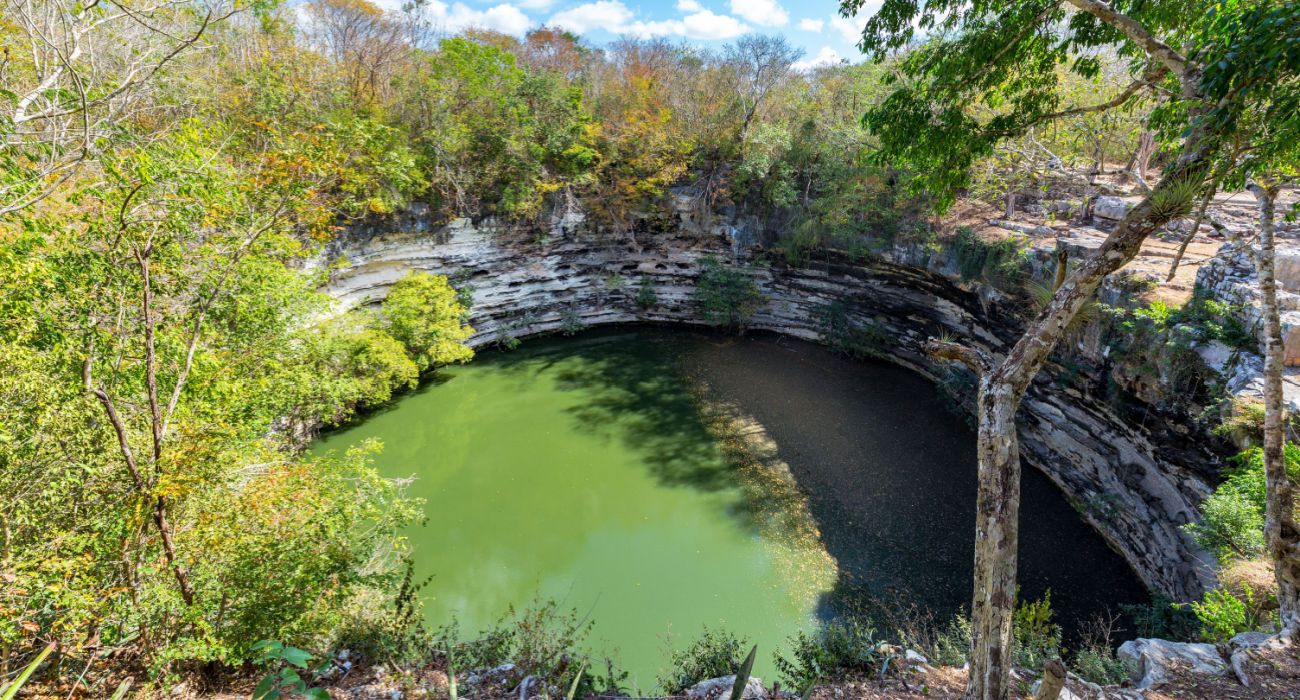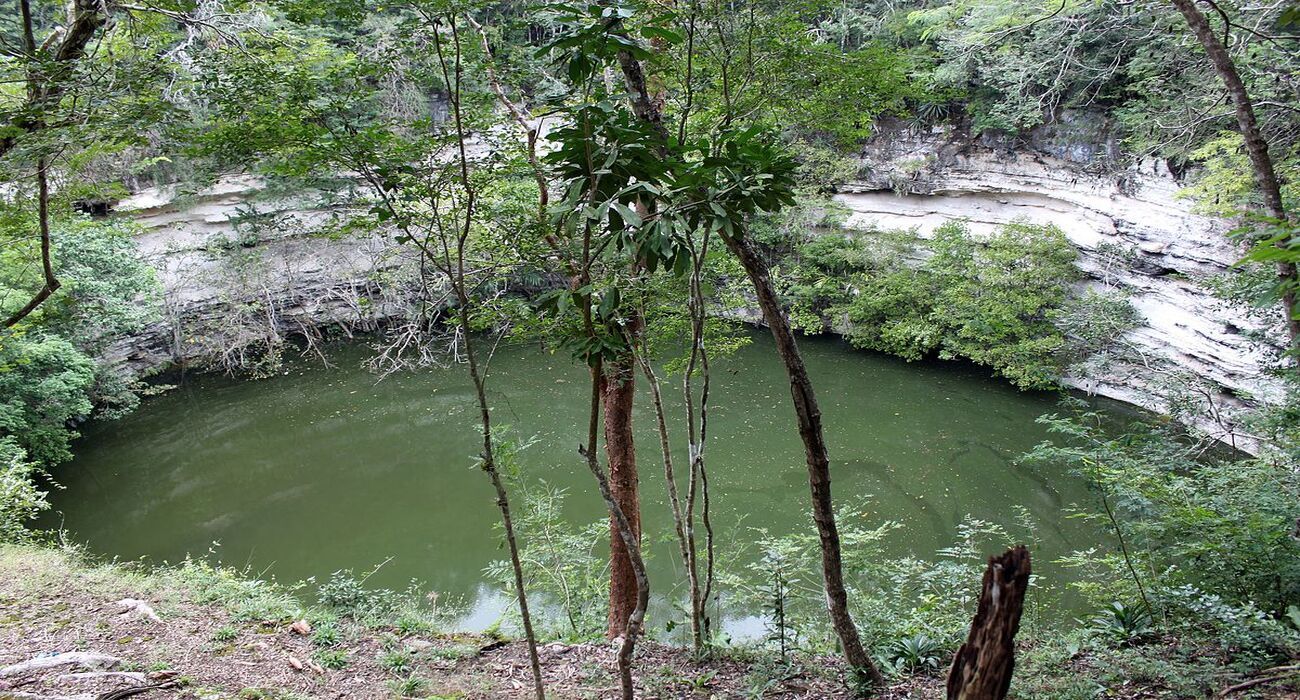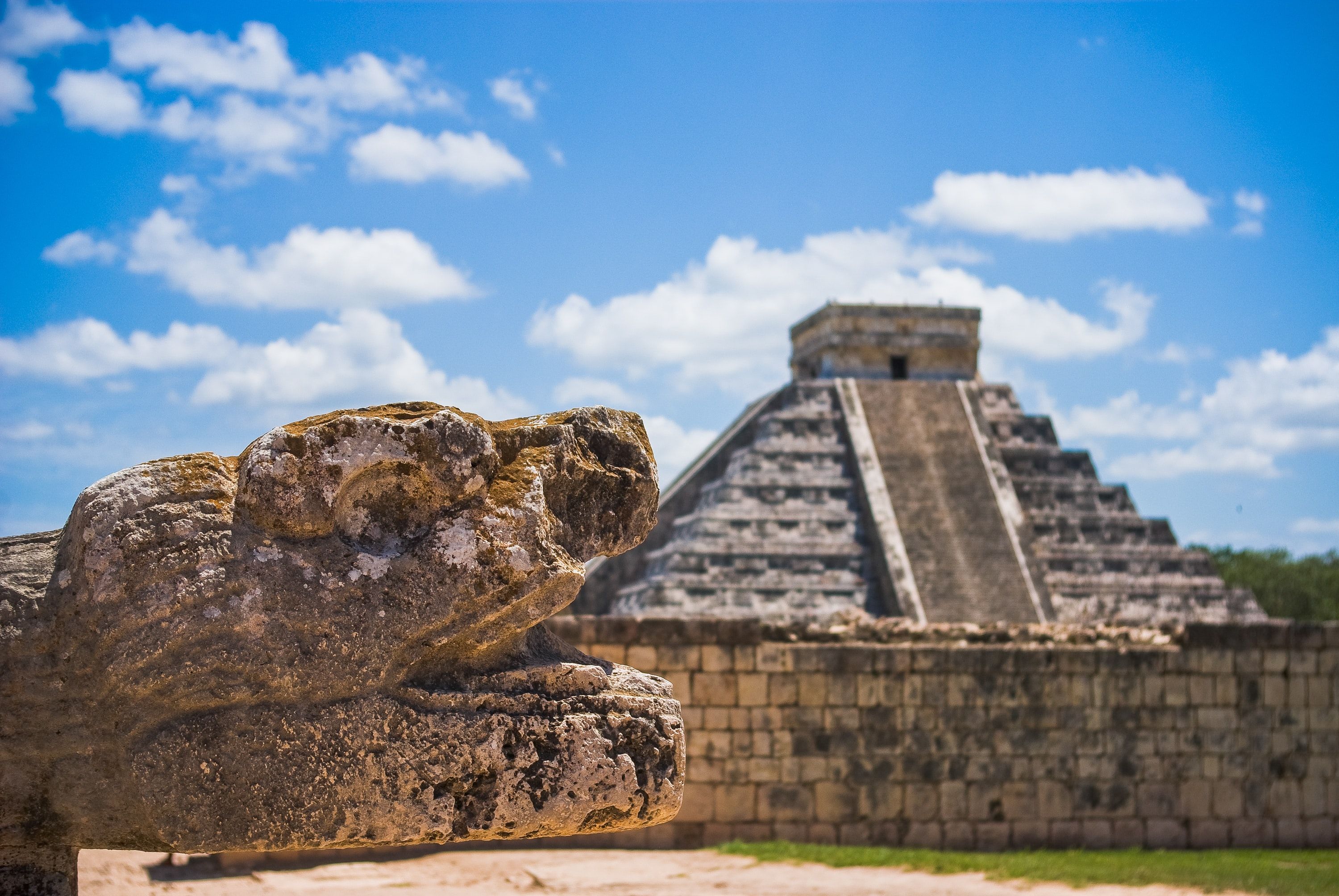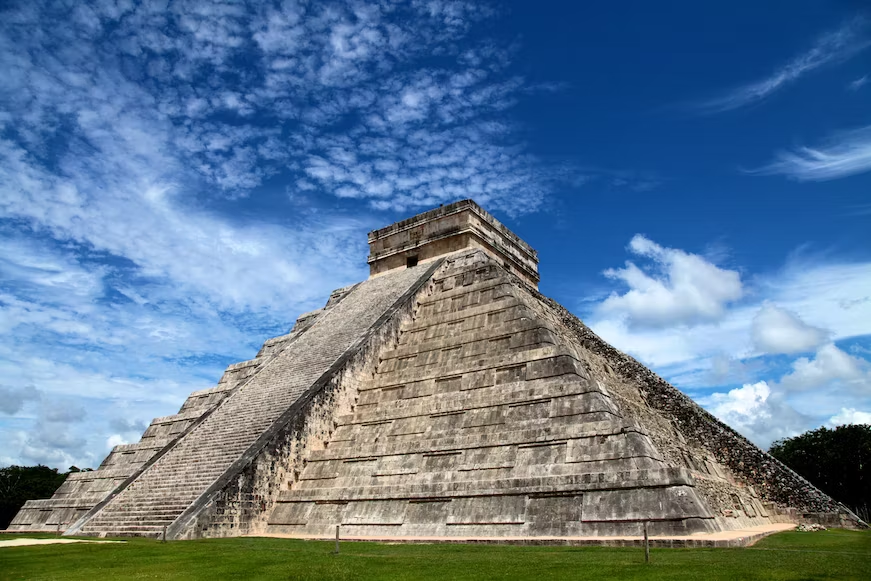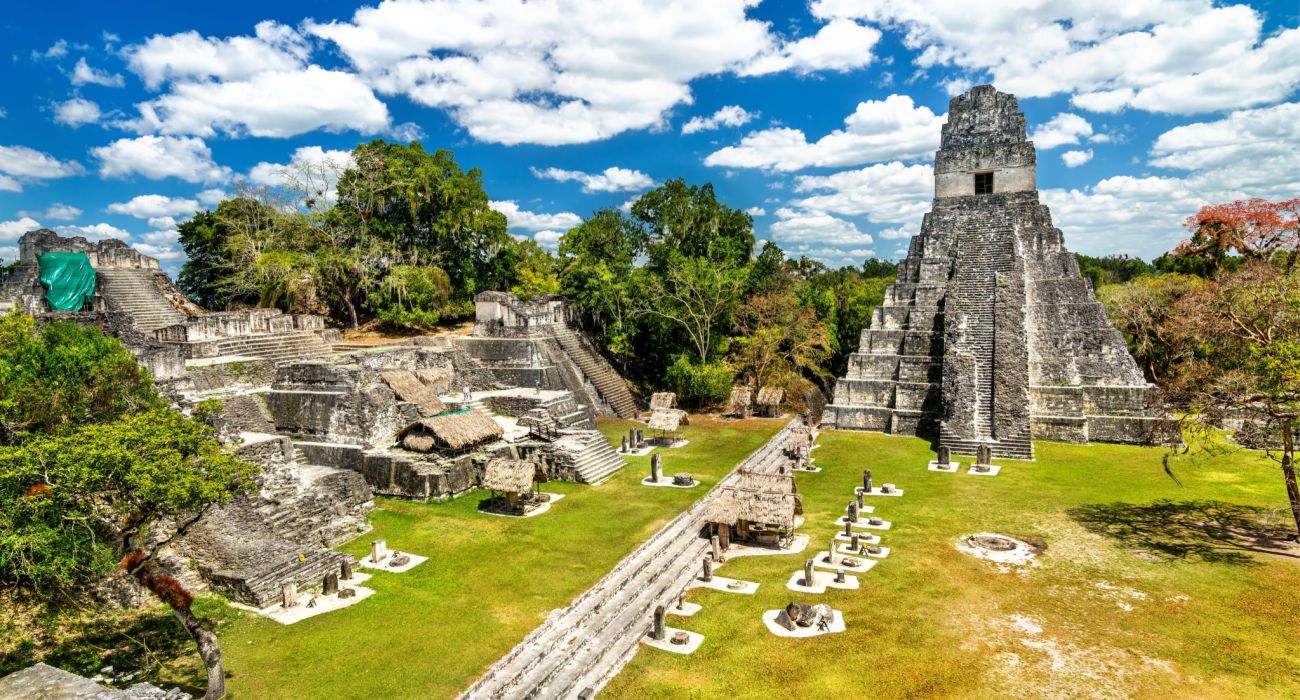Quick Links
Cenotes are large sinkholes characteristic of the Yucatán Peninsula in Mexico. Amazingly, the cenotes of the Yucatán Peninsula owe their existence to the asteroid that killed the dinosaurs some 66 million years ago (they are found in the massive ancient crater rim of the impact). Cenotes are one of the greatest attractions in the region, offering picture-perfect Instagram pictures.
To the ancient Maya, caves were sacred conduits to the underworld. Cenotes also often held a sacred status and were sometimes used for sacrifice. Chichen Itza is one of the most famous Mayan sites, drawing millions of visitors every year. It is also home to the Sacred Cenote and a hidden cenote discovered under the pyramid relatively recently.
History & Archeology: What To Know About The Sacred Cenote Of Chichen Itza
The Sacred Cenote is otherwise known as the Well of Sacrifice and is found at the major archeologic site of Chichen Itza. The ancient Maya would conduct pilgrimages to the site. It is connected to the civic precinct of Chichen Itza by a 300-meter, or 980-foot raise pathway called a 'sacbe.'
It is known from both Maya and later Spanish sources that pre-Columbian Maya used to put human bodies and valuables into the cenote as a form of sacrifice to Chaac (the god of rain). It is believed that the sacrificial victims included warriors, children, and maidens. It is possible that most of the juvenile victims were either purchased or captured while their parents were busy. The warriors were likely enemies captured in battle.
- Size: 165 Feet by 200 Feet
The cenote was dredged early in the 1900s and again in the 1950s. During these projects, a number of artifacts like pottery, incense, jade, gold, and human bones were discovered in them. In the early studies, a number of artifacts were taken illegally from Mexico to the USA. With over 200 bodies and other archeological findings, the Sacred Cenote has the most sacrifices and tributes known of the cenotes of the region. Thousands of various objects have been removed from the cenote - including a number of otherwise perishable objects that have been preserved by the cenote (such as wooden objects).
In case anyone is wondering, the Sacred Cenote is not suitable for swimming, as it has a lot of underwater vegetation. The water table is around 89 feet or 27 meters below, and the cenote is surrounded by sheer walls.
The Steam Bath Or Temazcal Of Chichen Itza
Near the Sacred Cenote are the ruins of an ancient steam bath (or 'temazcal'). It was there that the sacrificial victims were purified before being offered to the gods. Next to the building is a platform overhanging the cenote from where the offerings were made to the gods. Take the time to visit the old steam bath and see its remains. See the stove where stones were heated and then cold water poured on them to produce steam. See the mining four columns in the portico and the stone slabs where the ancient bathers would have sat.
While the Roman baths were used routinely by the citizens of the cities, this bath was normally used to purify those who were to be sacrificed. While the Roman baths were for cleaning, this Maya bath was for ritual spiritual purifying.
The Hidden Cenote Under The Pyramid of Kukulcan
Chichen Itza is dominated by the Pyramid of Kukulcan. It is a large and remarkable temple pyramid and the central attraction of the archeological site. But it has its secrets. There is an older, smaller pyramid within it, and underneath the pyramid is a hidden cenote.
In 1997, a cenote was found under the pyramid by radar studies carried out by the Universities of Minnesota and San Francisco. In 2015, further studies established that the cenote is eight meters beneath the pyramid, with the pyramid resting on the limestone platform of the roof. In 2017, more studies found that there are entrances to the cenote from nearby caves, but they have been blocked - probably intentionally. Who knows what other secrets Chichen Itza has yet to give up?
What To Know About Visiting Chichen Itza Today
Chichen Itza is home to perhaps the most famous Mayan ruins in the world. The archeological site is open every day from 8.00 am to 5.00 pm. Those who would like to really delve into the history and stories of the site should consider taking a guided tour.
- Open: Mon-Sun: 8 AM - 5 PM
- General Admission: Adults (13+): $613 MXN ($35)
The site is a 2-3 hour drive from Cancun and is a full-day trip. But Chichen Itza is far from the only Maya attraction in the area. Take the time to discover the many less touristic Maya ruins and avoid the crowds. There are also Maya ruins in the neighboring countries, such as Tikal in Guatemala, which is considered one of the great Maya ruins to discover.

